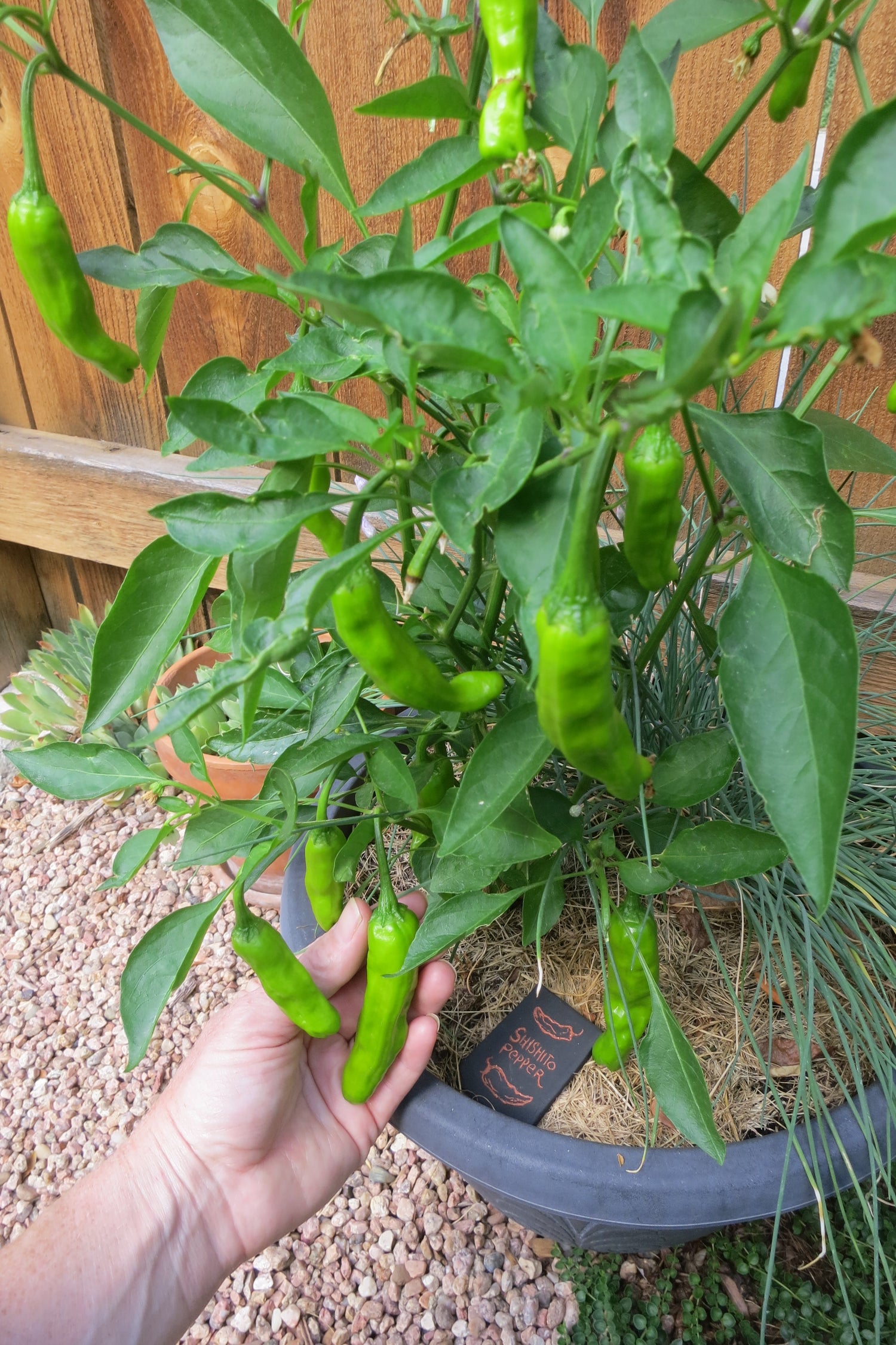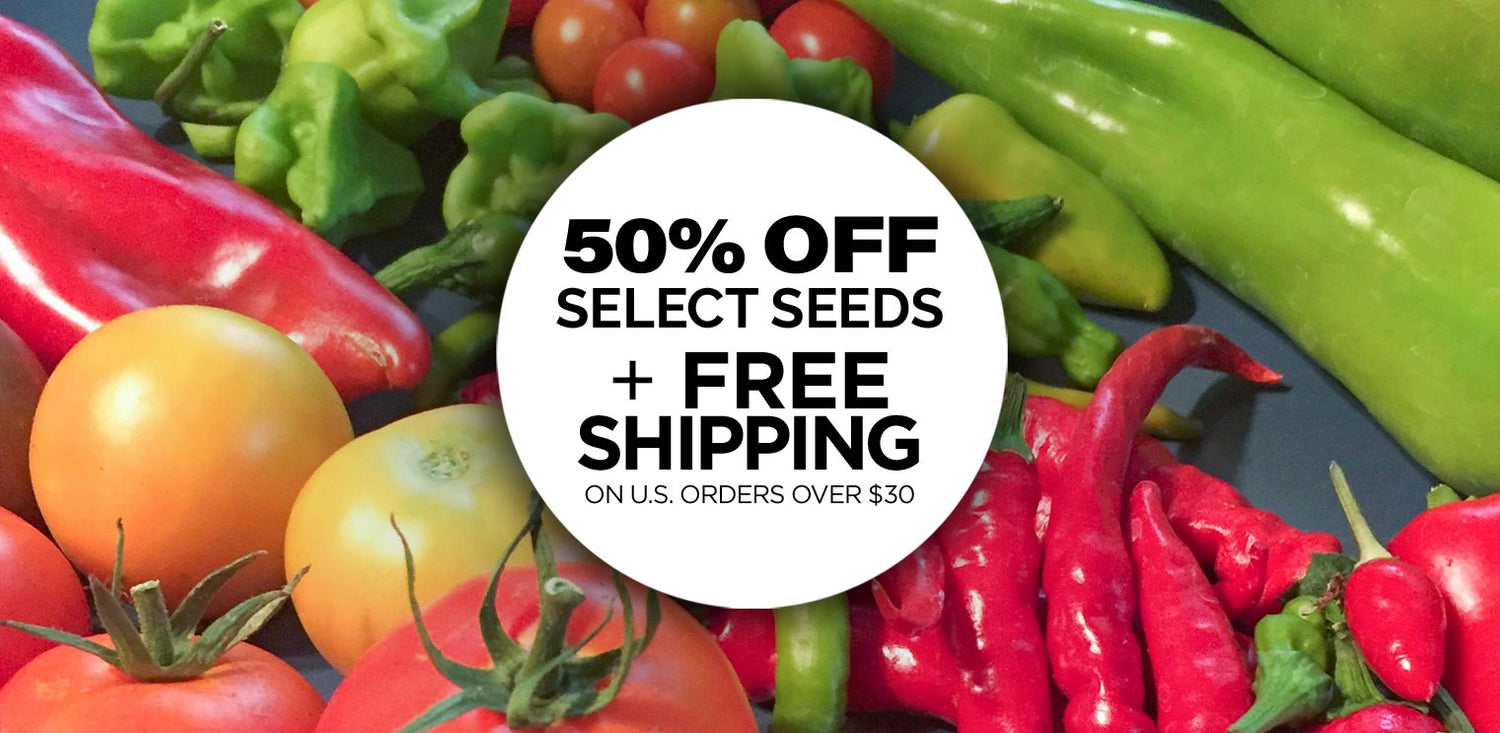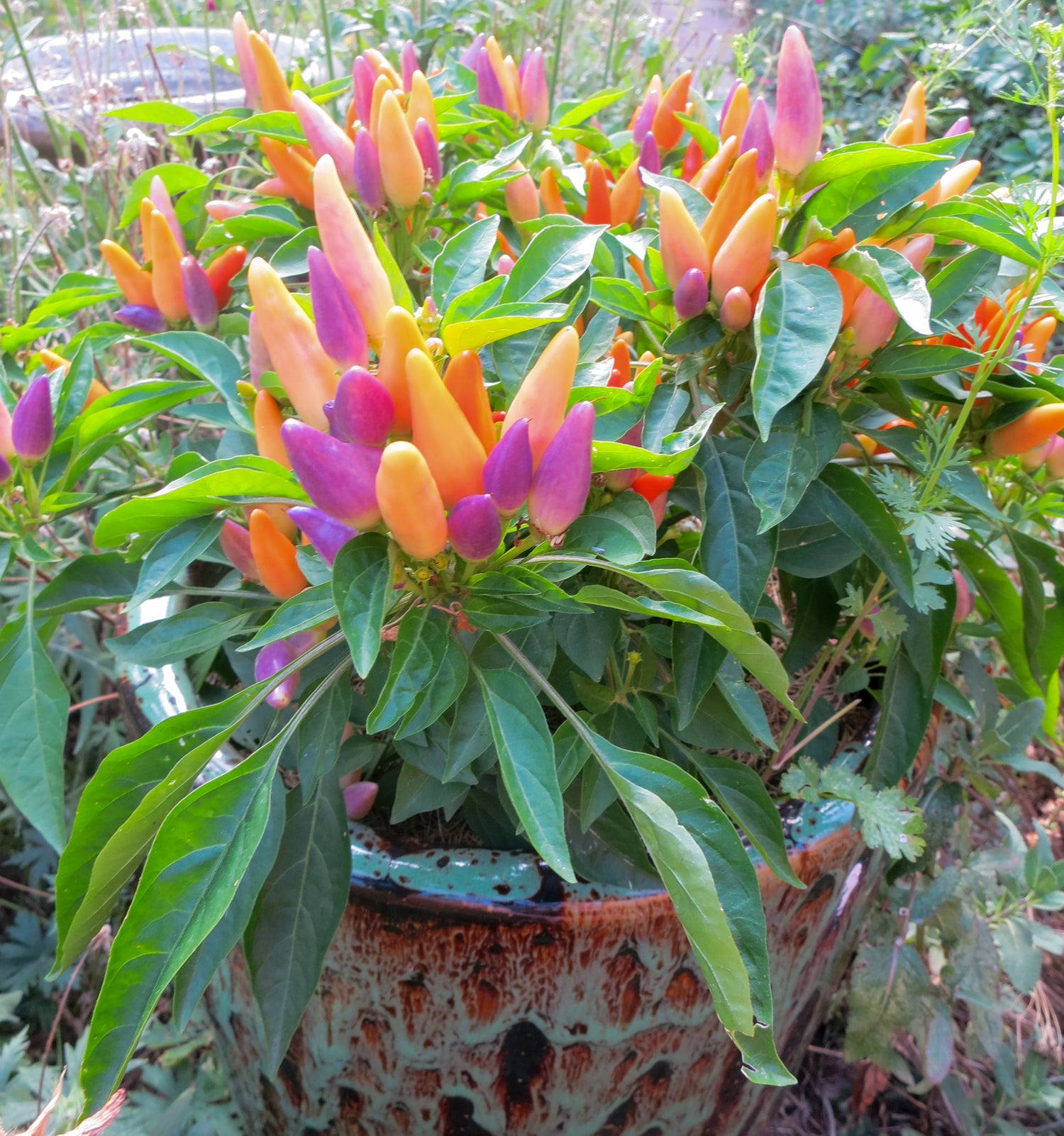
Recent customer question:
“HELP! I garden in containers and have a nice amount of soil left from growing peppers this past year. I would like to revitalize the soil to use next year for my peppers and tomatoes. I plan on adding new soil too, but what nutrients would you suggest adding?”
Answer: Yes, you can reuse potting soil for growing peppers, but it must be amended to replenish nutrients and structure. To replenish the soil, it's good to mix in some slow-release organic fertilizers, worm castings, or other nutrient-rich amendments like bone meal or blood meal, and, of course, homemade compost. Find more ideas below.
Of course there is one consideration if reusing potting soil for your peppers – check for and remove any signs of disease or pests. If disease was a problem, it would be best not to reuse the soil for other peppers. Instead, consider using the used potting soil in other garden beds for non-nightshade vegetables or other plants instead.

Homemade Compost is Best!
Add homemade compost to your used potting soil! Using your own compost that you make at home for the best way to replenish your used potting soil. Your homemade compost is going to be much more full of microbial activity and life than any compost you buy in a bag from the store. That's because compost made at home is usually produced at lower temperatures compared to industrially produced compost, so it retains a diverse community of beneficial microorganisms that you can't get in a store-bought bag of compost. Homemade compost also doesn't require plastic waste from bags or transportation, so it's a win-win! Here are our top composting tips »

Mulching Containers:
If you're leaving your containers outside over the winter, it's also good to cover the potting soil with some sort of mulch like grass clippings or leaf mulch over the winter months to keep the soil life alive, insulated, and conserve moisture in the soil.
In fact, it's good to keep your potting soil in containers and garden soil covered all the time to benefit the living soil – covering your soil helps to build carbon, fertility, and resilience in your garden. In the photo above, we've used grass clippings to mulch a potted pepper plant.

Cover Crops for Containers:
You could even grow a cover crop such as peas, clover, winter rye, vetch or oats – this basically works like a “living mulch” that will keep soil life happy over the winter months and build the soil. Then in early spring just chop it up, and mix it into the potting soil come spring a couple weeks before planting. The photo above shows a cover crop pea plant that was uprooted, you can even see the special root nodules that contain rhizobia bacteria, which convert atmospheric nitrogen into a form that the plant can use. This entire plant, roots and all, was chopped up and turned under the soil to feed the next season's plants.
Here are some testimonials and suggestions from other pepper growers:
- I grow 300 pepper and tomato plants in 10-25gal bags. I keep it simple. Horse manure, compost, worm castings, then bone meal when planting.
- Get some used mushroom growing substrate blocks and crumble it up in the soil. Then water with willow tea
- Add Compost and Humus
- Add Mushroom compost
- I just add a layer of compost
- Be careful not to plant the same type of veggie in the same pots year after year. For example, grow legumes or other crops every other year to keep the soil fertile and not exhaust it from certain nutrients that peppers may need.
- Add gaia green amendments. I'm on my third run in the same pots. I even leave the old rootball in.
- Mix in some fresh homemade compost with the spent potting soil, and water plants initially with compost extract.. To make compost extract, simply put compost in a mesh bag like a painters bag or cheesecloth, then dunk it in unchlorinated water for about 30 seconds to make a quick "tea extract" filled with soil life, then use that water to water in new seedlings or seeds.
- Add a 1:3 ratio of compost to spent potting mix
Reusing potting soil from last year:
Don't throw away used potting soil, replenish it! All of these suggestions above revolve around the idea of adding more nutrients into your used potting soil – which is all you need to keep growing more peppers in the same pots.

Here are more of our Tips on How to Grow Peppers in Pots »
Happy growing!



















